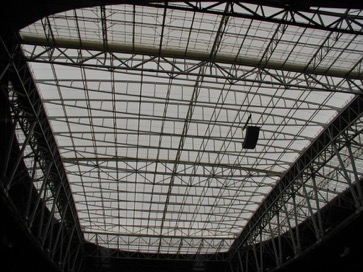Infrastructure Applications of 6xxx Series Aluminum Alloys
It is estimated that 56,000+ bridges are structurally deficient in America with an estimated $123 billion in rehab needed. The solution? The 6xxx Series Aluminum Alloys. Not only can they be used for emergency repairs but they can provide a long-term solution to this infrastructure problem with minimal maintenance required.Let us review what sets this alloy apart, its advantages, and the types of projects the alloy is best suited for.
What is an aluminum alloy?
Aluminum alloys are created by taking aluminum and adding elements, creating chemical compositions with enhanced properties. Once created, these compositions receive a 4-digit number with the first digit signifying a general series that characterizes its main alloying elements.
What does it mean when an alloy is a part of the 6xxx series
The main agents in the 6xxx series are silicon and magnesium in order to form magnesium silicide within the alloy. Alloy 6061 is the most commonly used of the series, typically used in truck and marine frames.
What are the advantages of the 6xxx aluminum alloys?
- High Corrosion Resistance – 6xxx series aluminums can withstand abrasion, keeping their strength and durability in a variety of environments. This is one of the appeals to using it in infrastructure and architectural projects that hope to create structures with the intent of lasting decades. Whether its receiving harsh sunlight in the Nevada desert or nearly year round rain in Seattle, the alloy is able to hold up.
- Extrudablitity – A unique feature of the 6xxx series is its extrudability. The ability to make specific, extruded parts from the alloy is another factor in why architectural and infrastructure members use this alloy. They typically require unusual, high-strength components and the power of extruded of 6xxx series is its ‘place-metal-where-you-need-it’ flexibility.
- Heat treatable, weldable, flexible – 6061 is a highly weldable alloy, using tungsten insert gas welding or metal inert gas welding. After welding, the properties near the weld are those of 6061-O (a loss of strength of around 80%). However, MIG and TIG welded material can be heat treated again to bring the material back to the pre-welding temper. Another option may be Friction Stir Welding (FSW). With FSW, the profiles are joined together through the use of a specialized rotary machine tool. Although the material is heated and joined together through friction, the overall heat applied to the material is much lower and of shorter duration than MIG or TIG welding and the heat affected zone is much less and retains most of the original strength.
What are the applications of the 6xxx Series Aluminum Alloys?
It is this combination of advantages that make 6xxx Series Aluminum Alloys prime candidates for architectural and infrastructure projects. Such projects include:
- Bridges or aluminum bridge decking: Extruded aluminums can be used to build traditional bridges or bridge decks can be pre-built in a modular fashion and moved to bridge sites. This method can limit the amount of time that bridges are under construction and save money in the long run.
- Roof Structures: Typically implemented for arenas and gymnasiums, the 6063 or 6061 extruded tubes are used in large scale roofs with 5xxx alloy sheets covering them.
- Pipelines: Because of their high corrosion resistance the 6xxx series is great for pipeline systems that have possibly acidic or dangerous materials flowing through them.
- Automotive: Whether for a car, motorcycle, bus, or train, the 6xxx series is often used in the automotive industry for its high dent resistance and durability.

Taber Extrusions recognizes the hard work and precise engineering required for large-scale infrastructure projects. Capable of producing very large aluminum shapes with our exclusive 10” x 28” rectangular container along with our 16” and 20” round containers, we canconsistentlysupply our customers with some of the widest, most complex multi-void hollows in the industry. Taber produces their 6xxx series alloys in-house, and our recent investments in our casting and fabrication capabilities have poised Taber to be a great fit for any of your architectural and infrastructure needs… and a reliable partner for all aspects of your project.
Recent upgrades to our aluminum cast house and aluminum fabrication capabilities have put Taber in the perfect position to do just that. Check out our video on Aluminum Extrusions for Infrastructure Projects.
To learn more about how we can be of service visit: https://taberextrusions.com/
For inquires or quotes visit: https://taberextrusions.com/contact-us/
Follow Taber Extrusions
LINKEDIN: https://www.linkedin.com/company/8843183/
FACEBOOK: https://www.facebook.com/taberextrusions/
TWITTER: https://twitter.com/taberextrusions
Interested in becoming a part of the Taber Team? Submit your resume to careers@taberextrusions.com.
